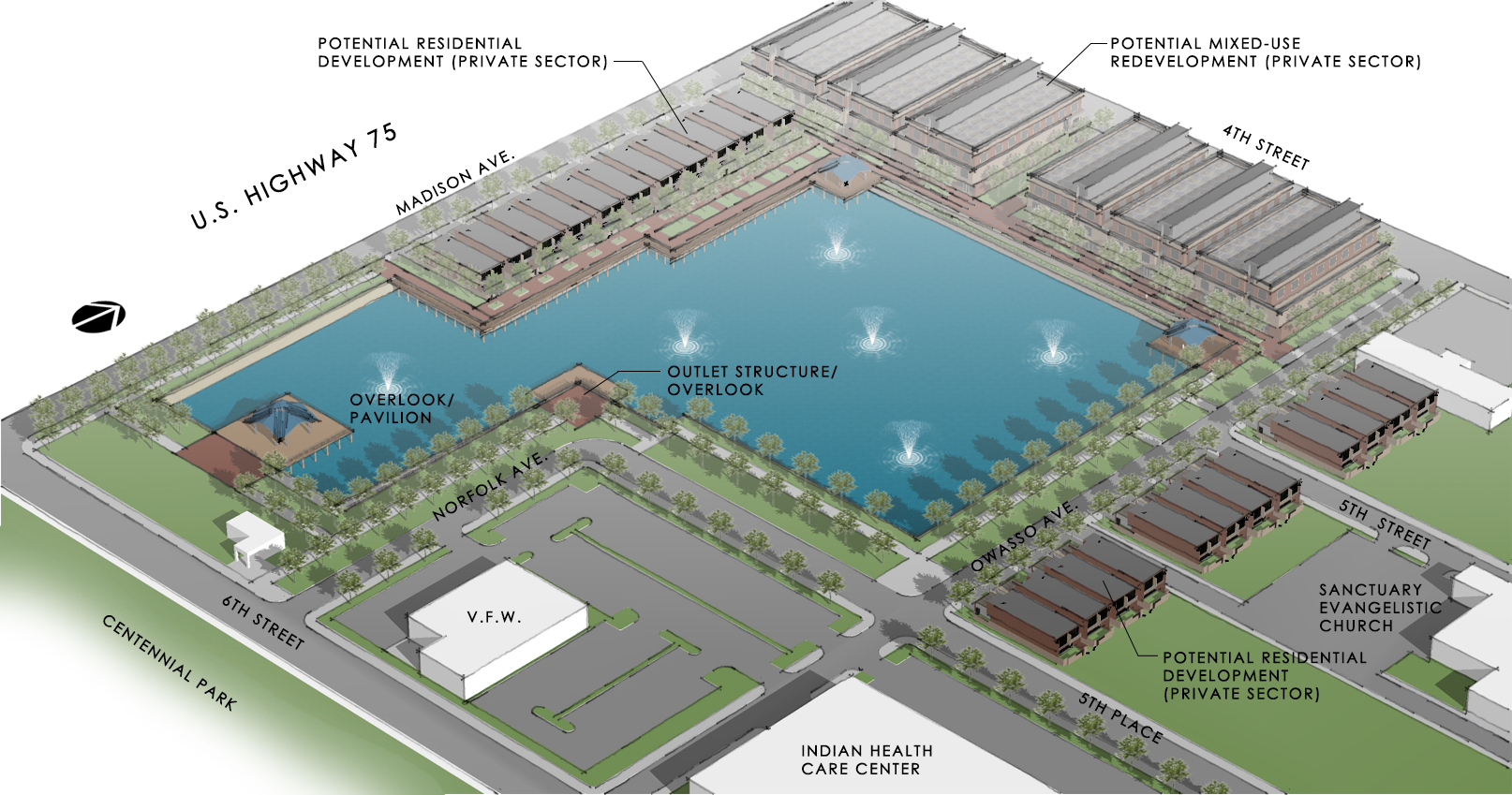Tulsa detention pond threatens Paul Harvey's neighborhood
A stormwater detention pond planned by the City of Tulsa is displacing owners of historic homes, affecting the western part of what is today known as the Pearl District. One of the property owners, now in the midst of a judicial condemnation process, has been trying to gain public attention for his neighborhood's plight. News on 6 had a story on the issue last Thursday.
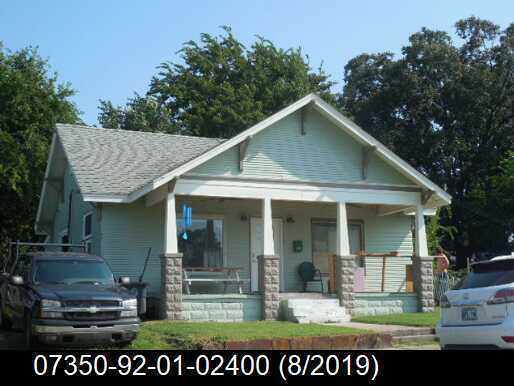
John and Tara Dawson bought the home at 1111 E. 5th Pl., in the Central Park Place subdivision, on June 21, 2018, for $65,000, according to Tulsa County Assessor records. Photos on that assessor's property page indicate a considerable amount of recent renovation, both completed and ongoing, including the addition of a loft. The home was built in 1903.
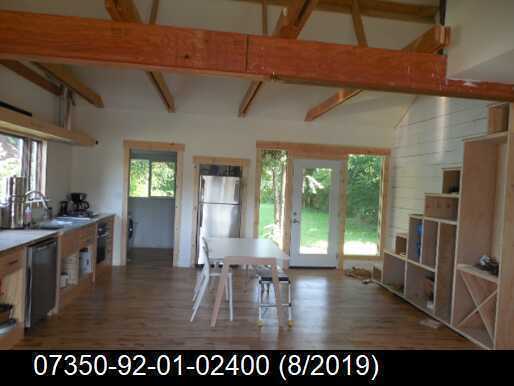
The Tulsa City Council voted to condemn the Dawsons' home on July 10, 2019, as one of a group of six items that received almost no comment. Chairman Phil Lakin declined to read the list of items, and only one of the items, involving a Zarrow Foundation donation for a deputy police chief to tour psychiatric emergency room facilities in Arizona, received any comment. The condemnation passed unanimously, with the support of District 4 Councilor Kara Joy McKee. The whole process took about 90 seconds.
At the Urban and Economic Development Committee on June 26, 2019, City Director of Engineering Services Paul Zachary stated that the Dawsons bought the property shortly after the city sent "Notice of Interest and Opportunity" letters to property owners in June 2018, and that the former property owners did not inform the city of the property transfer. The Dawsons' purchase price was the same as the city's offer to the previous owners. A city review appraisal did not modify their estimate of market value. According to Zachary, the property owner refused to meet with the city to discuss the offer in January, declined the offer in February, stating that it was too low, but refused to present a counteroffer, and had not responded to the final offer in April. The backup material for this agenda item lists the contacts between the city and the owner. (Meeting agenda is here.)
Councilor McKee's response at that meeting suggested that she wasn't familiar with this major project within her district's boundaries. The question that needed to be asked, but wasn't asked by the incurious rubber-stampers that currently sit on our City Council, was whether the detention pond was actually necessary.
The planned detention pond is part of the Elm Creek Basin Stormwater Management Plan, one of the many such plans drawn up in the wake of the 1984 Memorial Day flood. The Elm Creek basin includes most of the Pearl District and the southwestern part of the Kendall-Whittier neighborhood. Elm Creek flows in an underground tunnel between the western end of Centennial Park lake, under the Gunboat Park neighborhood, west of the 18th and Boston area, through Veterans Park, emptying into the Arkansas River just south of the 21st Street bridge. Despite receiving 12 inches of rain in 8 hours, flooding along Elm Creek was minimal (USGS has a map of the areas flooded in 1984) compared to that experienced along Mingo Creek and its tributaries, in parts of Brookside, and along the Sand Springs Line west of downtown. The ancient Elm Creek drainage system had done its job.
The Centennial Park lake was built as part of that post-1984 plan, but the plan had been modified for the sake of aesthetics. The original plan called for Centennial Park to be replaced by a deep, steep-sided detention basin, unusable for recreation. Rather than completely eliminating the park for a large, shapeless stormwater facility, a new community center was constructed, and the lake was landscaped, creating a beautiful place to walk and a lovely foreground for views of the downtown skyline. (The history of the Elm Creek Master Drainage Plan is discussed beginning on page 27 of the amended 6th Street / Pearl District Infill Plan.) Under the revised plan, two smaller ponds would be added to handle the remaining capacity determined by the hydrologists, one pond north of 6th Street and one southeast of 6th and Peoria.
Elm Creek has not been a high priority for stormwater mitigation. In February 2013, a PowerPoint presentation by City of Tulsa Engineering Services identified the Joe Creek 47th Street relief line near Evanston Ave. and Perryman Ditch (Rockford Ave. north of I-44) as highest priorities for funding. A heat map of stormwater complaints had most of the Elm Creek basin in an area coded for 0-5 complaints per square mile over a five-year period. A list of repetitive loss areas, compiled in 2017, identified only two in the Elm Creek basin: A triangle of land upstream from the Katy tracks between 4th Place, Rockford and Troost Avenues (11 paid damage claims, totalling $205,075 over 40 years), and six properties northwest of 8th Street and Wheeling Avenue (six paid damage claims, totalling $68,471 over 40 years). Neither situation is likely to be improved by this Elm Creek West Pond, which is on a different tributary of the creek. None of the paid claims listed occurred since the construction of the Centennial Park lake or improvements to storm sewers in the basin. None of the Elm Creek basin is within any FEMA flood zone, but a narrow band along the path of the creek is within the City's regulatory flood plain (see plate 36 and plate 37, or see the interactive Tulsa Regulatory Floodplain Map here)
In previous years, the City of Tulsa attempted to get funding from the Federal Emergency Management Agency (FEMA) for the project. The city submitted a request for funding on August 8, 2011, which was denied by FEMA on November 20, 2012, "citing deficiencies in the SOW, engineering feasibility and effectiveness, cost estimate, NEPA compliance and project eligibility." FEMA received an appeal on March 28, 2013, and denied it on August 27, 2013. Tulsa submitted a second-level appeal on November 19, 2013. FEMA Headquarters reviewed the appeal and sent a final denial letter on July 14, 2014, stating:
Benefit Cost Analysis - FEMA Headquarters performed a reevaluation of the Benefit Cost Analysis to determine the validity of what was submitted by the applicant. Our reevaluation, using all of the inputs provided by the applicant, indicates that total benefits derived from protection of the 31 structures is $27,446,627. With a total project cost of $9.95M, the resulting BCR is 2.76. However, a closer review of the data indicates that the applicant is subscribing too many benefits to the structure located at 1802 S. Baltimore Ave. The assumptions pertaining to a complete shutdown of this structure during a flood event and the loss of use for an extended period of time cannot be substantiated or supported. The structure located at 1802 S. Baltimore Ave. provides $24.13M in benefits while the project as a whole yields $27.45M in benefits which accounts for 88.0% of total project benefits. FEMA's reevaluation of the BCA yields a benefit cost ratio (BCR) of 0.33 demonstrating that this project is not cost-effective....The project will remove less than half of the structures from the 100 year floodplain and the benefits would accrue to primarily one structure. Given that one structure (1802 S. Baltimore Ave, a 10-story bank building [owned by Spirit Bank]) is providing the bulk of the benefits for this project, it may be more feasible and cost effective to merely provide some type of floodproofing mitigation for this single structure.
I note that there is nearly a full city block of vacant land and surface parking just north of the Spirit Bank building which could be turned into storm water detention, probably at considerably less expense. John Neas proposed bringing Elm Creek to the surface in this area back in 1991.
Funding for the Elm Creek project was included in the 2013 "Improve Our Tulsa" sales tax and bond issue package, under the heading of Planning & Economic Development: "Phase I Pearl District Flood Control and Redevelopment - $5,000,000." That appears to be the source of funding for this acquisition.
The Alaback Design website shows the concept for the Elm Creek West Pond's development: Five city blocks cleared away for the pond itself and for high end mixed-use and residential redevelopment on the periphery. It's hard for me to understand how a pond that is only needed to hold water during a hundred-year flood would be brim-full as depicted.
Included in the pond's footprint is the childhood home of legendary broadcaster Paul Harvey at 1014 E. 5th Place, a 2212 sq. ft. house with first and second floor porches, built in 1920.
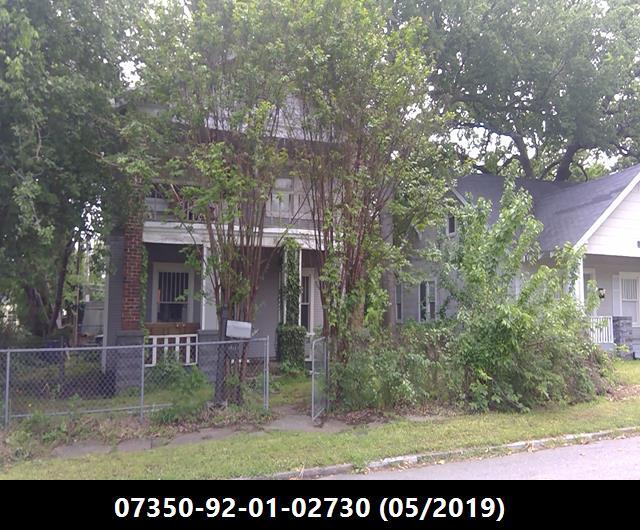
His mother, Anna Aurandt, the widow of Harry Aurandt, who was murdered by armed robbers in 1921, continued to live in the home for decades. A poignant ad in the December 13, 1922, Tulsa World, announces: "WILL SHARE my house with one or two ladies or man and wife, moderate charges. Mrs. H. Aurandt, Osage 3992." The ad before that one lists the address and offers to rent the entire first floor to "reliable adults" for $75 a month. The 1957 Polk city directory shows that Mrs. Anna Aurandt had two boarders that year. She died in 1960. BatesLine reader S. Lee, who lived next door to Mrs. Aurandt in the late 1950s, provided the photo below, taken by his father during one of Paul Harvey's visits home.
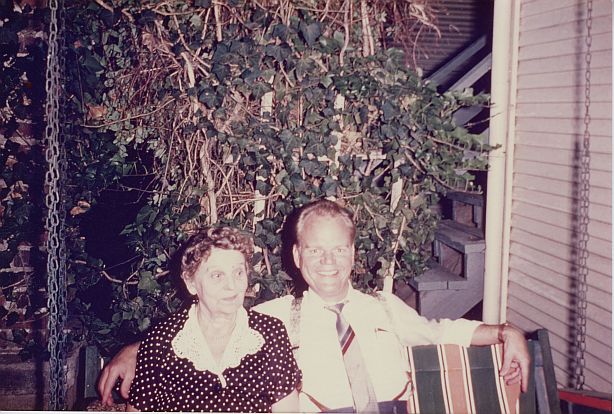
This is one of those situations where the City Council ought to have acted as a check and balance on the engineers and asked for alternatives that would have protected the urban pioneers trying to revive this historic neighborhood. A Reddit thread notes that during our extremely heavy rains (just shy of a 50-year-flood event) in June, the elevation of the Centennial Park pond only increased by about 3 feet, well within its capacity, and no flooding was noted in the neighborhood.
Unfortunately, institutional inertia means that it's unlikely that the feasibility and worth 15-year-old plan will be revisited in time to spare the neighborhood. The condemnation court case is well underway, and the only question to be resolved is what is the fair market value for the property. Our Dear Leader, Mayor Bynum IV, is too busy playing tourist and issuing imperial decrees that turn reality on its head to delve into why his city government is crushing the dreams of an actual creative young couple -- the sort of people he allegedly wants to attract to our fair city.
0 TrackBacks
Listed below are links to blogs that reference this entry: Tulsa detention pond threatens Paul Harvey's neighborhood.
TrackBack URL for this entry: https://www.batesline.com/cgi-bin/mt/mt-tb.cgi/8527
